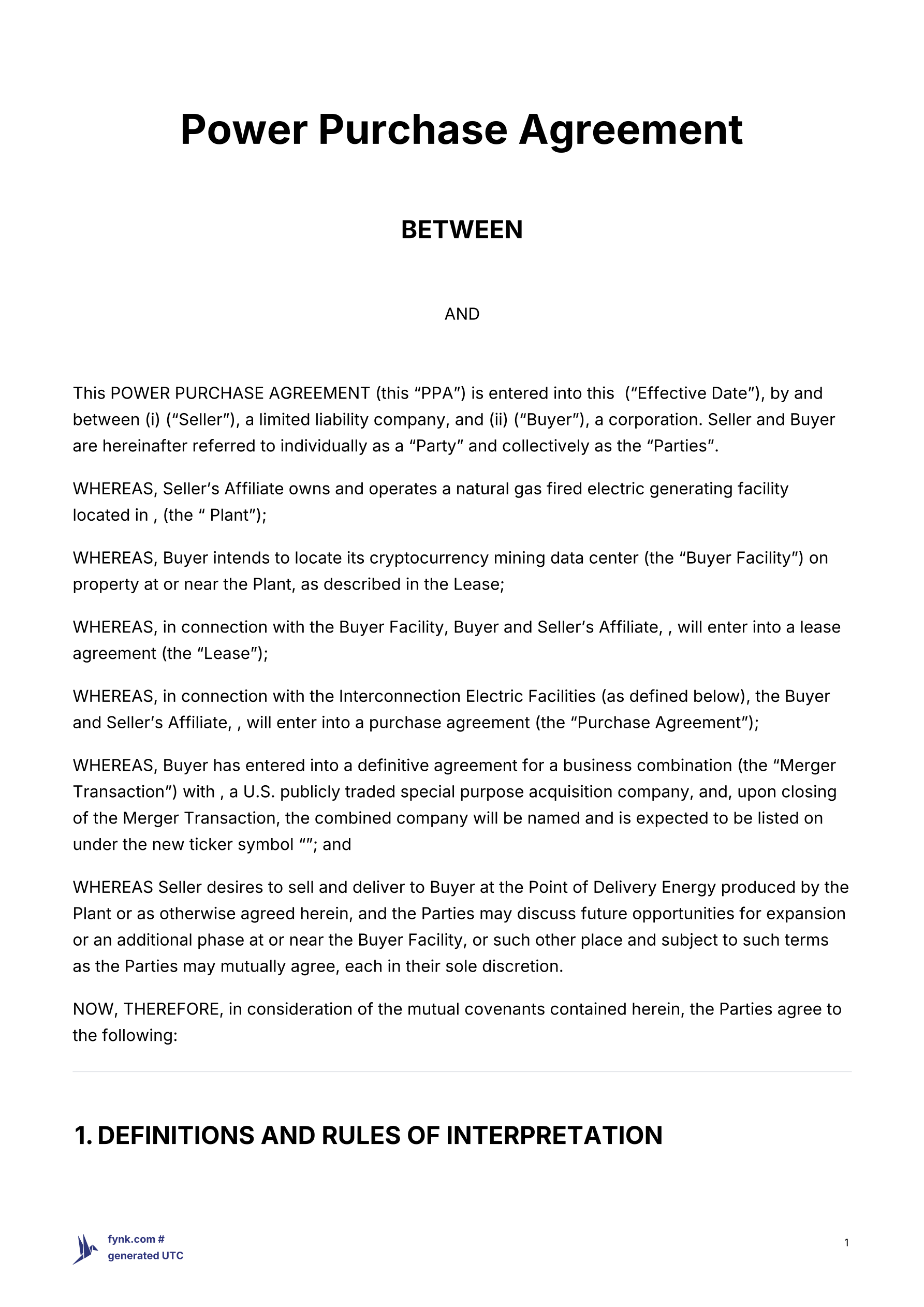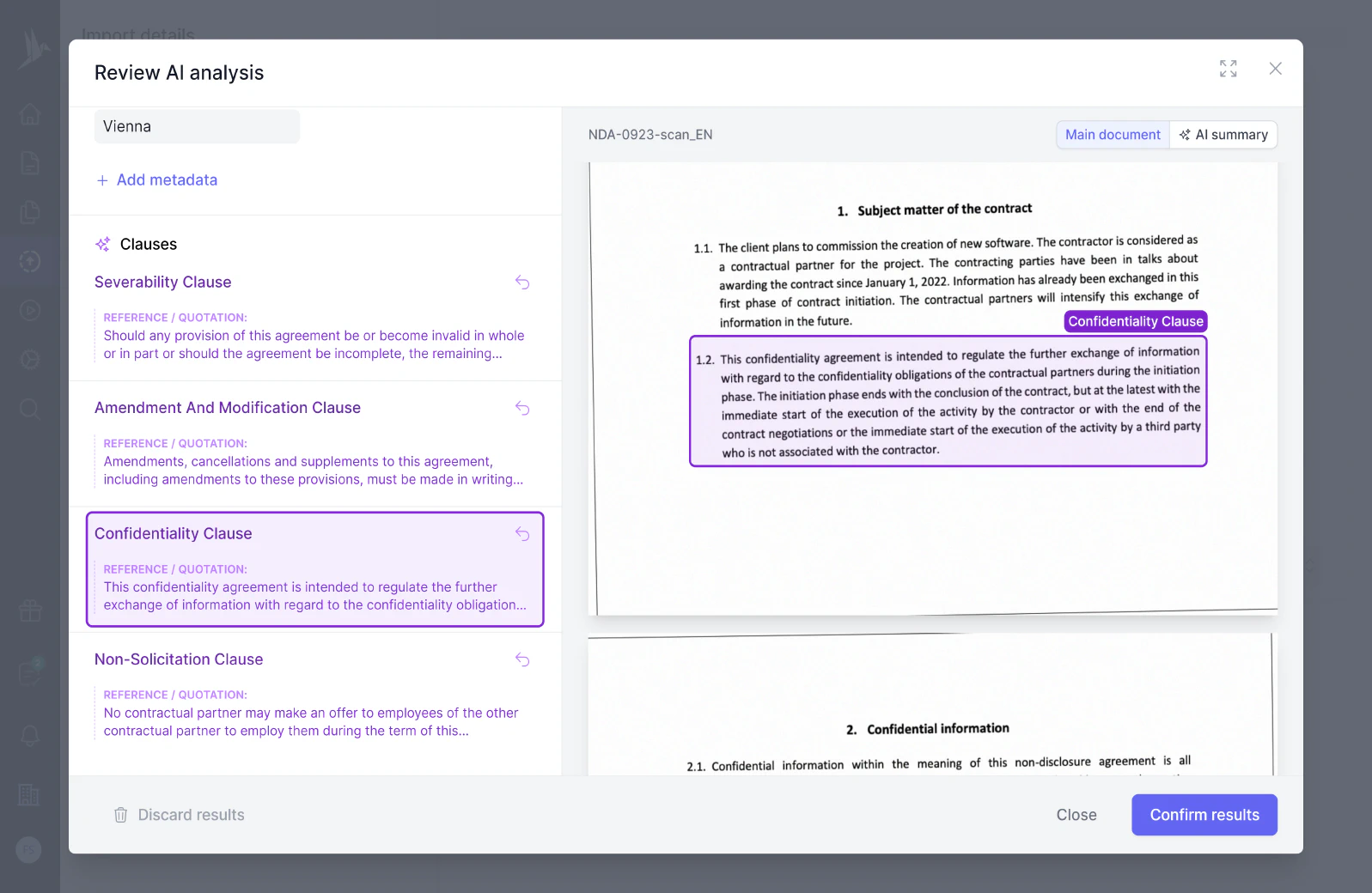
Power Purchase Agreement Template
A comprehensive power purchase agreement template covering delivery, and pricing to support long-term energy transactions.
A CPI (Consumer Price Index) escalation clause allows for the adjustment of payments or costs in a contract based on changes in the Consumer Price Index, reflecting inflation or deflation trends. It ensures that the purchasing power of the agreed payments remains stable over the term of the contract by aligning them with current economic conditions.
MIP V has agreed to acquire its interest in the partnership for cash based on a 5.6% 2021 cash cap rate. The absolute triple net master lease between MPT and Steward was recently amended for a new 20-year term through 2041, which includes customary terms such as annual CPI escalation. Subject to market conditions, the partnership expects to raise nonrecourse secured debt of up to 55% of asset value. Total anticipated proceeds to MPT, including proceeds from the expected secured debt, will be approximately $1.3 billion.
CPI Escalation 1. CPI Calculation The PPA Price be escalated on each CPI Review Date (as defined in this Schedule) in accordance with the following formula: Pn = P1 x CPI2 / CPI1 Where: Pn = the CPI adjusted PPA Price which will apply from the CPI Review Date; P1= the unescalated PPA Price; CPI is the “All groups CPI; Australia” ABS Series ID A2325846C; CPI2 = the CPI as at the relevant CPI Review Date; and CPI1= the CPI as at 1 January 2021 (ABS December 2020 Quarter value). For the avoidance of doubt, where the ratio of CPI2 to CPI1 is less than 1 (one), the CPI ratio for the purposes of this agreement will be deemed to be 1 (one). 2. CPI Review date In respect of the PPA Price, each of the following dates which occur during the Supply Term will be a CPI Review Date: (a) 1 January 2021 for the base date of the PPA Price; and (b) each anniversary of 1 January 2021 thereafter. Where in both cases the ABS Series value from the preceding December quarter is to be used.
Effective February 22, 2021, we entered into a triple-net lease agreement with SBR Associates LP for the commercial building at 27 Castilian Dr. Goleta, CA for a term of five years, that began on April 1, 2021. The base rent for this property is $13,013.75 per month, with a CPI escalation over the initial base rent over the term of the lease. The lease expires on March 31, 2026 with the option to renew the lease with reasonable notice.
Our principal executive office is located at 27 Castilian Dr., Goleta, California. Effective February 22, 2021, we entered into a triple-net lease agreement with SBR Associates LP for the commercial building at 27 Castilian Dr. Goleta, California for a term of five years, which began on April 1, 2021. The current rent for this property is $13,673 per month, with a CPI escalation over the initial base rent over the term of the lease. The lease expires on March 31, 2026, with the option to renew the lease with reasonable notice.
Market-based Fees not subject to target return calculation but subject to CPI escalation: o Truck Loading Fee o HNDP Fee o Gas Lift Fee
CPI Escalation refers to the use of the Consumer Price Index (CPI) to adjust costs in contracts or agreements to reflect inflation or deflation over time. It ensures that the real value of payments remains consistent despite changes in the economic environment. CPI is a measure that examines the weighted average of prices of a basket of consumer goods and services, such as transportation, food, and medical care. By integrating CPI-based adjustments into contracts, parties can manage the risk of price changes due to inflation.
CPI Escalation should be used in long-term contracts or agreements where inflation might significantly impact the financial terms over time. Common scenarios include:
Employing CPI Escalation helps in maintaining the economic balance of contracts by protecting both parties from inflation risks.
To write a CPI Escalation clause, follow these steps:
Identify the specific CPI index: Clearly specify which CPI index will be used (e.g., CPI-U, CPI-W) and the geographic area it covers.
Define the adjustment period: Specify the frequency of adjustments (monthly, quarterly, annually).
Specify the calculation formula: Clearly define how the CPI changes will translate into contract adjustments. This formula might be:
“The payment shall be adjusted annually on [anniversary date] by the percentage change in the CPI-U for [geographic area] from [starting date] to [ending date].”
Include rounding and limits: Address how fractional cents will be handled and set limits for both minimum and maximum adjustment levels if necessary.
Address notification and documentation: Specify how parties will be notified of changes and provide access to official CPI publications or sources.
CPI Escalation clauses are typically found in the following types of contracts:
Including CPI Escalation clauses in these contracts enables businesses and individuals to better manage financial expectations and obligations over time, providing a hedge against inflationary pressures.
These templates contain the clause you just read about.

A comprehensive power purchase agreement template covering delivery, and pricing to support long-term energy transactions.
Dive deeper into the world of clauses and learn more about these other clauses that are used in real contracts.
A cross default clause is a provision in a loan or credit agreement that triggers a default if the borrower defaults on another obligation, such as a different loan or financial agreement. This clause aims to protect lenders by ensuring they can take action if the borrower is experiencing broader financial difficulties.
A cross indemnity clause is a contractual agreement where each party agrees to indemnify, or compensate, the other for specified types of losses or damages arising from their own actions or negligence. This mutual arrangement ensures that each party bears responsibility for risks or liabilities that stem from their conduct, rather than shifting the burden onto the other party.
The "Cumulative Rights" clause ensures that the rights and remedies outlined in a contract are in addition to, and do not replace or limit, other rights and remedies provided by law. This allows parties to pursue multiple avenues for addressing breaches or enforcing terms, without being restricted to the options specified in the contract.
Try our AI contract analysis and extract important clauses and information from existing contracts.
< <
Fill out the form and we will get in touch with you to give you a personal, customized demo of fynk.
Greetings!
I'm Markus, co-founder of fynk. After you've submitted the form, I'll swiftly get in touch with you.
Also, right after you submit your details, you can pick a time that works best for you for our meeting.

